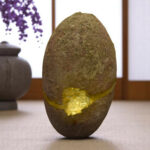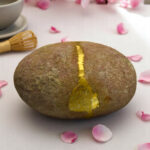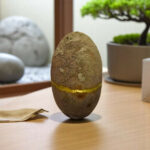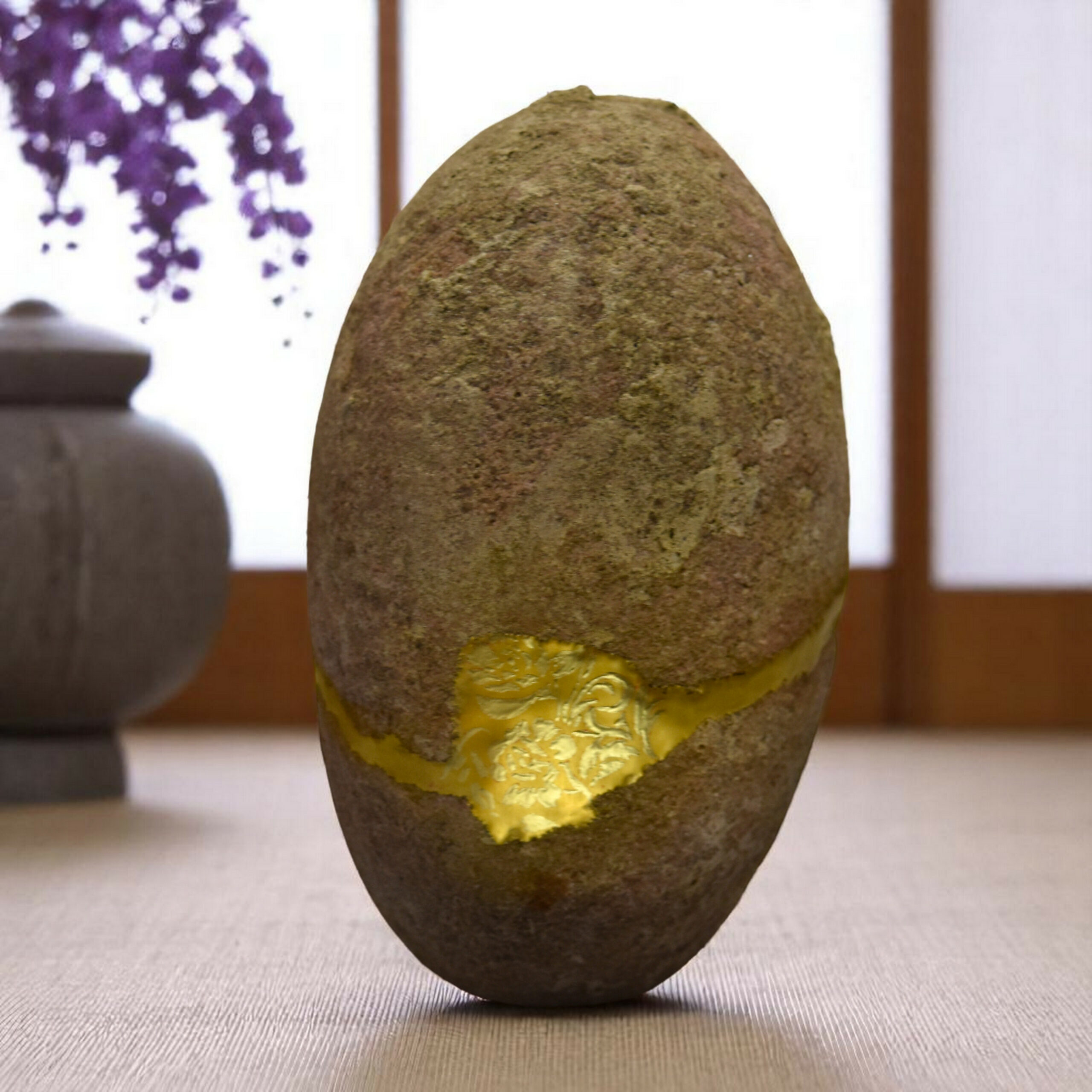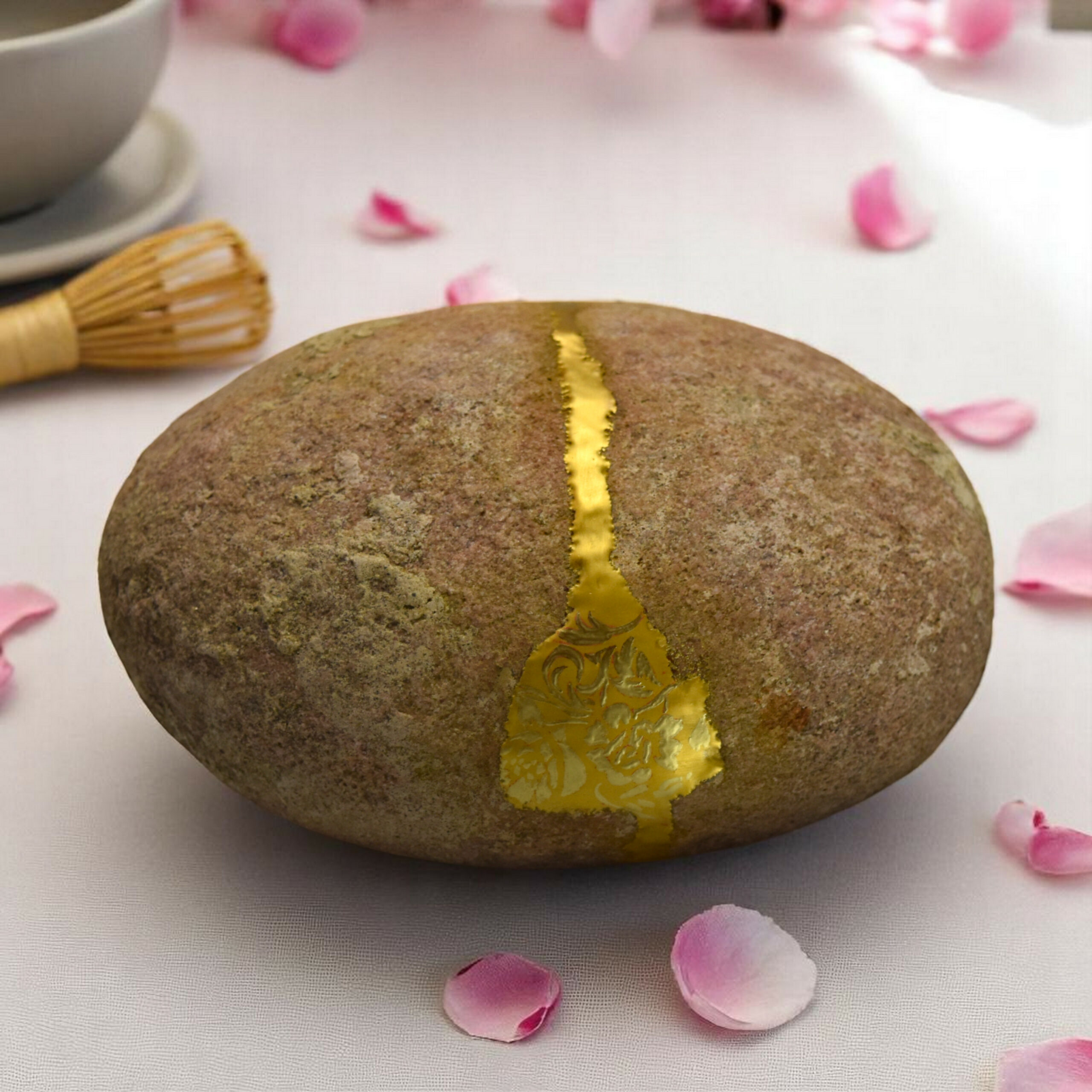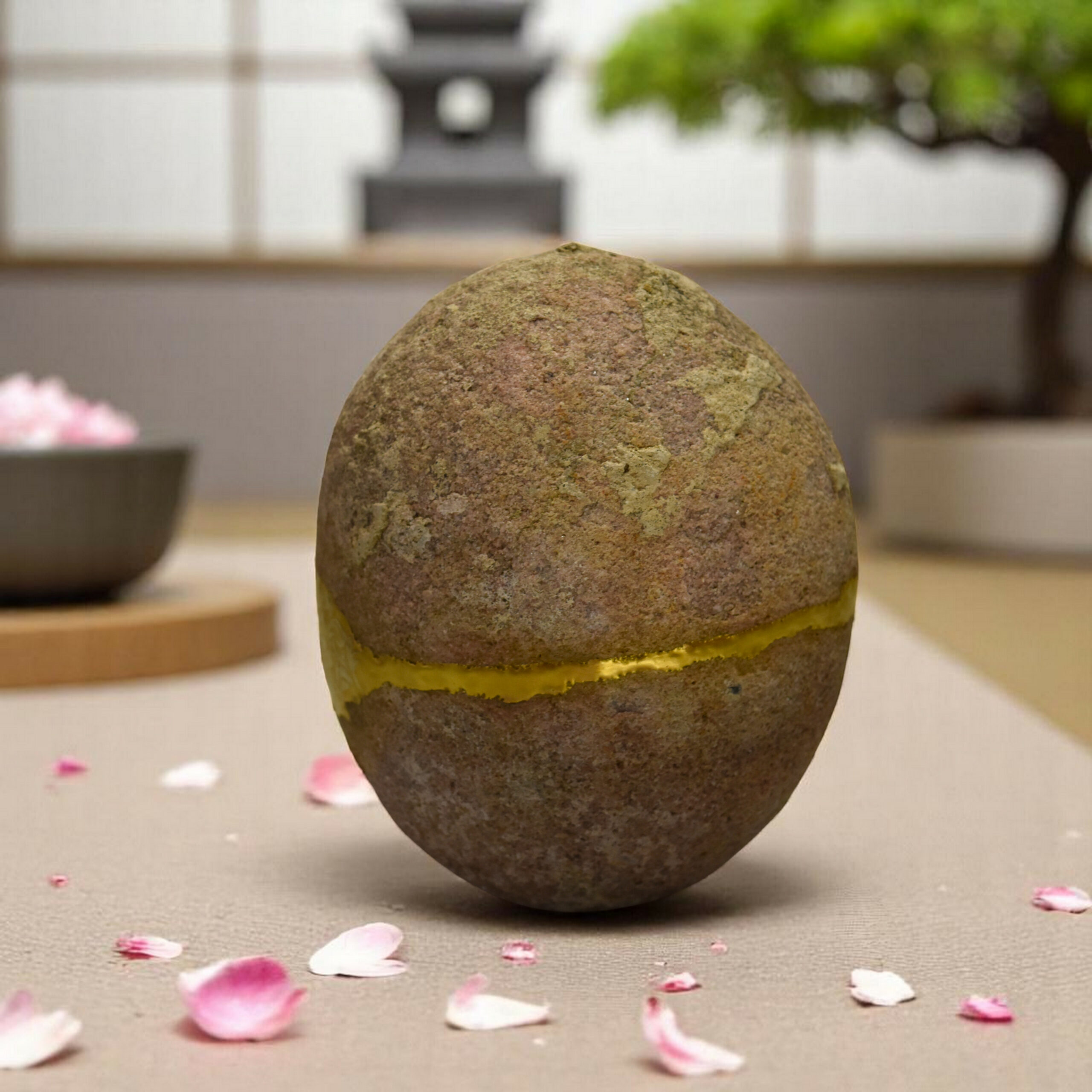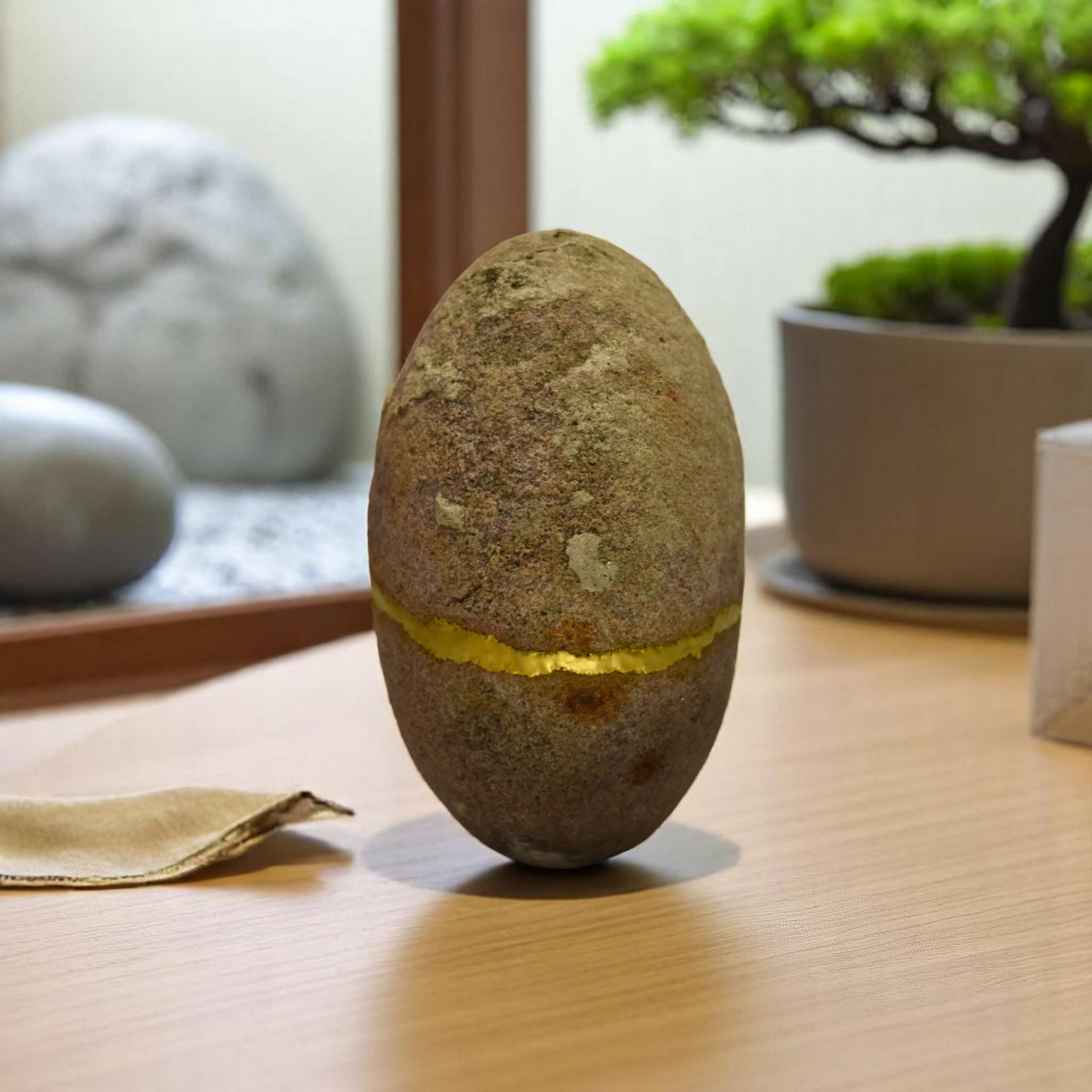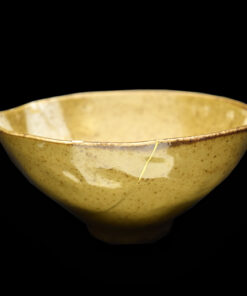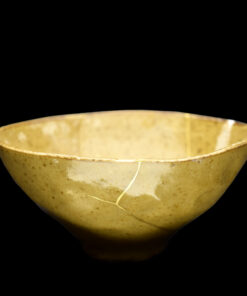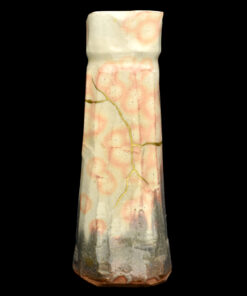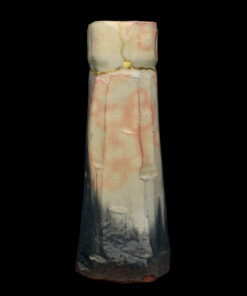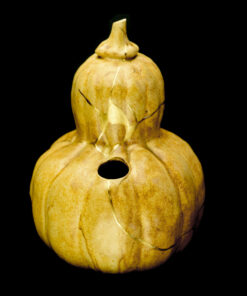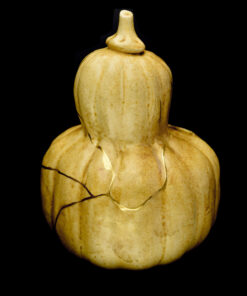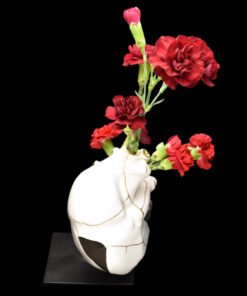Kintsugi stone
950 € VAT excl.
In stock
For express shipping please contact us before purchase as prices are difficult to calculate automatically on the website.
The Puddingstone Pebble: A Niçoise Renaissance and the Art of Maki-e
Discover a unique piece, an exceptional pebble sourced from puddingstone, an iconic sedimentary rock from the Nice region. This unique conglomerate is made up of ancient pebbles rolled by rivers and the sea, naturally cemented together over millions of years. The result is a solid, distinctive rock, a testament to the geological history of the French Riviera. This pebble measures approximately 6.3 inches (16 cm) long by 3.15 inches (8 cm) wide.
The Subtle Art of Kintsugi and the Peony Maki-e
This pebble, carrying a millennial history, has found a new life. Once fractured, it has been magnified by the ancestral art of traditional Kintsugi with 22-carat gold. Each golden line tells its past and sublimates the stone’s resilience. But the story doesn’t end there: on this restored surface, a delicate peony motif in 18-carat gold has been added using the Maki-e technique. This Japanese art, which involves drawing designs with lacquer and metallic powders (here, gold), transforms every detail into a luminous calligraphy.
The Echo of Japanese Stones: An Object of Contemplation
This work aligns with the profound Japanese tradition of stone appreciation, known as Suiseki. These natural stones are chosen for their form, texture, or patterns, and are seen as representations of landscapes or natural elements, inviting contemplation and meditation. This pebble, through its form and artistic restoration, embodies this philosophy, offering a miniature world and an invitation to introspection.
Remarkable Stability
In addition to its beauty and symbolism, this pebble possesses a surprising characteristic: it stands upright stably, allowing it to be proudly displayed on a desk, a shelf, or in an indoor zen garden.
This Kintsugi pebble with its peony Maki-e is much more than a simple stone; it’s an incredible sculpture, a bridge between Niçoise geology and Japanese art, a symbol of resilient beauty, and a profound object of contemplation.
| Certificate of Authenticity | Provided |
|---|---|
| Color | Cream |
| Materials | 24 carats Gold, Japanese sandstone, Urushi (Japanese lacquer) |
| Food Safe | Yes |
Related products
Traditional Japanese Kintsugi

